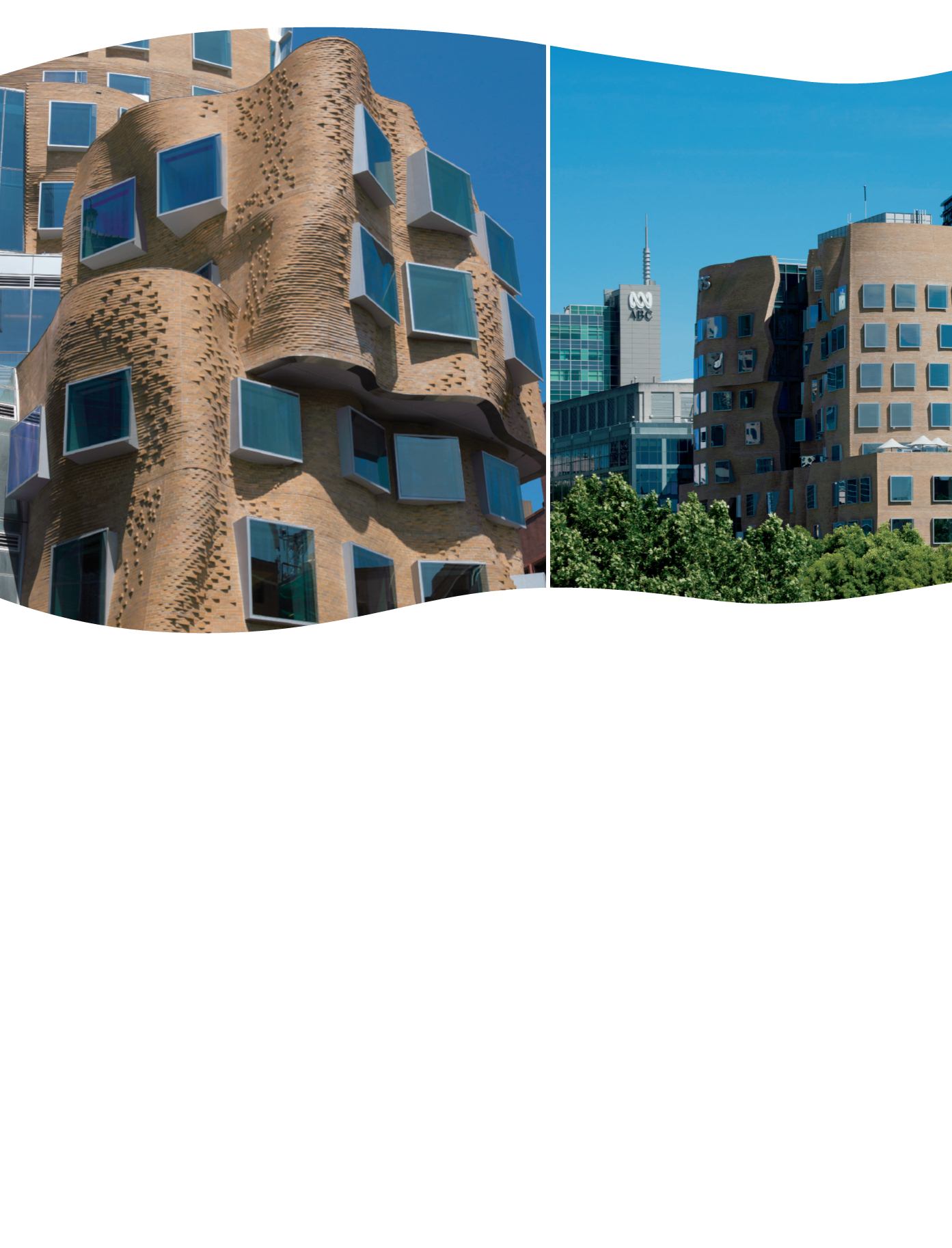

10
|
design
mag
“The brick engineering was quite a
complicated feature of the building, perhaps
one of the most complicated in the history of
bricks,” says Ken Morkaya, head of AECOM’s
Building Engineering Group, commissioned
directly by UTS to develop the brickwork
system.
Like all brick walling, whether veneer or double
brick, a cavity separates the inner and outer
walls of the Gehry building to allow any
moisture that may penetrate the wall to drain
to the outside.
The inner skin is prefabricated from steel and
defines the meandering curves of the walling
design.The outer face of the steel is coated
with a waterprooofing membrane.
Conventional brickwork uses wall ties that sit in
the mortar bed and are fixed to either the
timber frame or, in the case of double brick
walling, to the inner skin of bricks. Once the
mortar hardens, the tie is locked into place.
The essential difference in this design – and
this is the key engineering development that
gives integrity to the brickwork – is that the tie
is locked into a channel in the brick. Each tie is
then connected back to the inner steel
structure, located in a small carrier.The
position of each carrier was precisely
calculated by the designers and they were
attached to the steel inner skin during
fabrication.
The ties are adjustable to allow for variations in
the cavity width.Additionally, a heavy-gauge
stainless steel wire is located in the channel,
running the length of the section of brickwork.
It too is locked into place by the adjustable
nuts on each tie.
Finally, a special mortar was developed for the
project by AECOM’s Advanced Materials
division. It may seem logical to use something
like a fast-setting glue but this is almost
impossible for the bricklayer to work with.The
solution was to tweak a conventional mortar
recipe to combine increased strength with
workability.
Each stage of the development of the
technology was rigorously tested, both at a
facility in Guangzhou, China and in Australia,
including at UTS facilities.
“Testing the wall with angles of 26-degrees
also gives us the knowledge that we can lean
bricks and they will hold up.We’ve been really
happy with how the structure has performed,”
says Brandon Bell, UTS senior project manager.
On a practical note he adds that “We need to
know that when a window cleaner abseils
down the building that they’re not going to
dislodge any bricks.”
(from left) The dramatic
three-dimensionality of the
brickwork has never been
attempted before and
required the development of
an innovative engineering
solution.The brickwork
projects and recedes at up
to 26 degrees from the
vertical. Hand-laying the
380,000 special bricks was
a slow, laborious task that
challenged the skills of the
bricklaying team.















